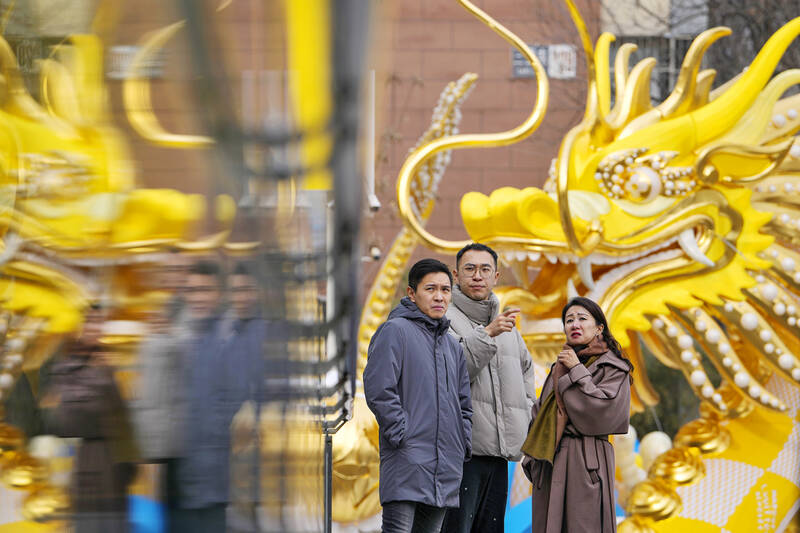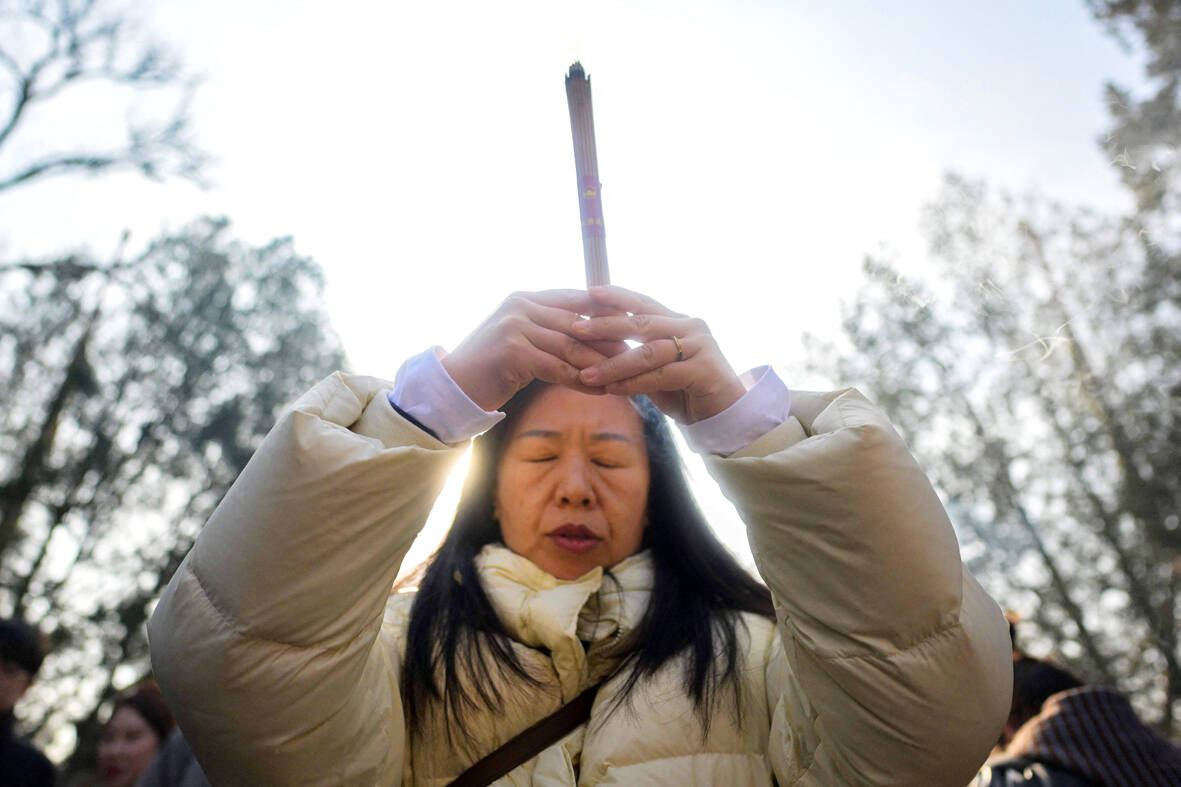There were contrasting reactions when the US rating agency Moody’s downgraded China’s A1 credit rating outlook from stable to negative last month. Financial markets, focused on the economy, paid it barely any attention. Chinese state media, looking at the politics, saw red. Global Times called it “biased and unprofessional.” A few days later, the Ministry of State Security issued a statement stipulating that the only purpose of “negative talk” was to doubt or deny China’s socialist system, and to contain its development.
The Chinese Communist party’s prickly attitude to criticism is not uncommon. It chooses instead to propagate a narrative of continuous success in which its own role is pivotal. It recognizes that China confronts big challenges nowadays, but attributes them to low confidence, thinks they are fleeting and says they’ll be resolved this year.
The reality, though, is that systemic problems have over the years become features in China’s US$19 trillion economy. The real estate market has tipped over after an almost unbroken 20-year boom, which the government itself encouraged. At about a quarter of GDP, housing now faces years of shrinkage as it adjusts to chronic oversupply and lower household formation.

Photo: AP
Property developers, local governments and state enterprises have high levels of debt and many face debt service difficulties. The virtual absence of inflation reflects inadequate aggregate demand. Stalled productivity growth, the politicization of regulation and the business environment, rapid aging, high youth unemployment and inequality also figure prominently.
It may seem churlish to draw attention to these things in the world’s second-largest economy, center of global exports, manufacturing and supply chains, and home to brands such as Alibaba, Tencent and TikTok. Yet Japan, 30 years ago, reminds us that it is quite possible to have islands of technological excellence and leadership, and also deep economic imbalances, deflating asset bubbles, over-indebtedness, and institutional weaknesses that compromise growth and prosperity. Technological prowess could not prevent Japan from succumbing to its proverbial lost decades, and there is no reason to think differently about China.
China’s outlook this year is likely to be more challenging than last year’s. The party will probably adopt a 5 percent GDP growth target again, but it may prove more elusive than last year’s, which had COVID weakness in 2022 as a comparison.

Photo: AFP
Last month, the annual Central Economic Work Conference set out priorities for this year, including science and technology innovation, stronger demand, stability, rural development and integration, and low carbon and ecological investment. Yet the government also said that impediments to recovery remain, citing inadequate demand, overcapacity in several sectors, weak social expectations and “still numerous risks and hidden dangers.”
Those expecting meaningful macroeconomic stimulus and reforms will continue to be disappointed. There will be some tax cuts and fee reductions for businesses and more support for the beleaguered housing market but only to stabilize the economy. Monetary and credit policies will remain “prudent.” There is no suggestion that the government will adopt serious measures to boost consumer demand and household incomes. It is reported to have decided instead to “strengthen economic propaganda and public opinion guidance and promote a positive narrative of China’s economy.”
In other words, cheerleading.
It is easy to see why Xi Jinping (習近平) was minded to meet Joe Biden in San Francisco in November. Both sides wanted to stabilize their most important external relationship, for a while at least, and Xi’s interest was clearly the economy. He also met EU Commission officials recently in Beijing to try to keep the EU close for trade and access to technology, but distant politically from the US.
No one should be fooled into thinking, though, that the slight thaw with the US and EU amounts to more than expedience. Indeed, a new trade war threat looms on the horizon, not least with the EU.
Chinese industrial policy, based around the proliferation of large-scale industrial funds and state subsidies and access to foreign technology has in the past resulted in excess capacity in sensitive areas such as steel and renewables, and is now being reflected in Chinese electric vehicle and battery production. The Chinese auto industry produces at less than 60 percent capacity utilization, and exports about 12 percent of its current 27 million unit production, in which the share of electric vehicles is rising steadily.
America’s 27.5 percent tariff on Chinese-made car imports make it a tougher market to crack. It is also trying to strengthen its own manufacturing capacity in new electric vehicles, renewables and semiconductors through the passage of the Inflation Reduction and Chips and Science Acts, and the imposition of export controls on sales of sensitive products to China. If Trump is re-elected in November, the bipartisan position regarding China would probably not change, but he might again emphasize trade policy as he did in his first term.
Europe, where tariff rates are much lower, offers a much more fertile opportunity for Chinese exports of its cars and its overcapacity. To this end, the EU Commission has initiated an anti-subsidy investigation, which is liable to result in restrictions and tariffs on imports of electric vehicles made in China. German and other auto manufacturers are shuddering already in the face of the steep increase in imports of Chinese autos, especially electric vehicles.
Faced with an array of domestic economic problems, China should ideally substitute market and structural reforms for the more familiar strategy of doubling down on already high manufacturing investment and exports. But it won’t. As a result, the economy will become still more unbalanced. This policy focus will trigger a new round of trade war as China’s industrialization and export push forces the US and Europe to import more Chinese products and de-industrialize.
The US, EU and other industrial countries will not go meekly to another deindustrialization graveyard in this way.

On April 26, The Lancet published a letter from two doctors at Taichung-based China Medical University Hospital (CMUH) warning that “Taiwan’s Health Care System is on the Brink of Collapse.” The authors said that “Years of policy inaction and mismanagement of resources have led to the National Health Insurance system operating under unsustainable conditions.” The pushback was immediate. Errors in the paper were quickly identified and publicized, to discredit the authors (the hospital apologized). CNA reported that CMUH said the letter described Taiwan in 2021 as having 62 nurses per 10,000 people, when the correct number was 78 nurses per 10,000

As we live longer, our risk of cognitive impairment is increasing. How can we delay the onset of symptoms? Do we have to give up every indulgence or can small changes make a difference? We asked neurologists for tips on how to keep our brains healthy for life. TAKE CARE OF YOUR HEALTH “All of the sensible things that apply to bodily health apply to brain health,” says Suzanne O’Sullivan, a consultant in neurology at the National Hospital for Neurology and Neurosurgery in London, and the author of The Age of Diagnosis. “When you’re 20, you can get away with absolute

May 5 to May 11 What started out as friction between Taiwanese students at Taichung First High School and a Japanese head cook escalated dramatically over the first two weeks of May 1927. It began on April 30 when the cook’s wife knew that lotus starch used in that night’s dinner had rat feces in it, but failed to inform staff until the meal was already prepared. The students believed that her silence was intentional, and filed a complaint. The school’s Japanese administrators sided with the cook’s family, dismissing the students as troublemakers and clamping down on their freedoms — with

As Donald Trump’s executive order in March led to the shuttering of Voice of America (VOA) — the global broadcaster whose roots date back to the fight against Nazi propaganda — he quickly attracted support from figures not used to aligning themselves with any US administration. Trump had ordered the US Agency for Global Media, the federal agency that funds VOA and other groups promoting independent journalism overseas, to be “eliminated to the maximum extent consistent with applicable law.” The decision suddenly halted programming in 49 languages to more than 425 million people. In Moscow, Margarita Simonyan, the hardline editor-in-chief of the